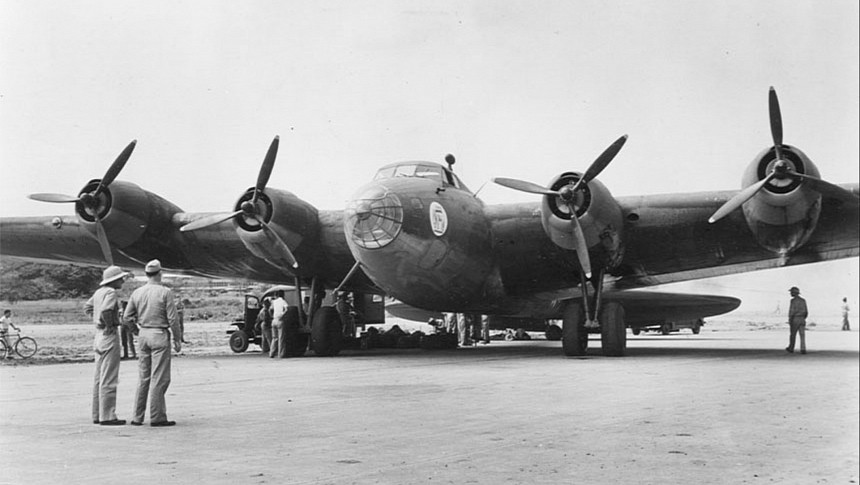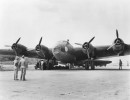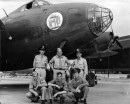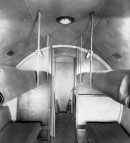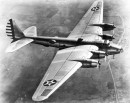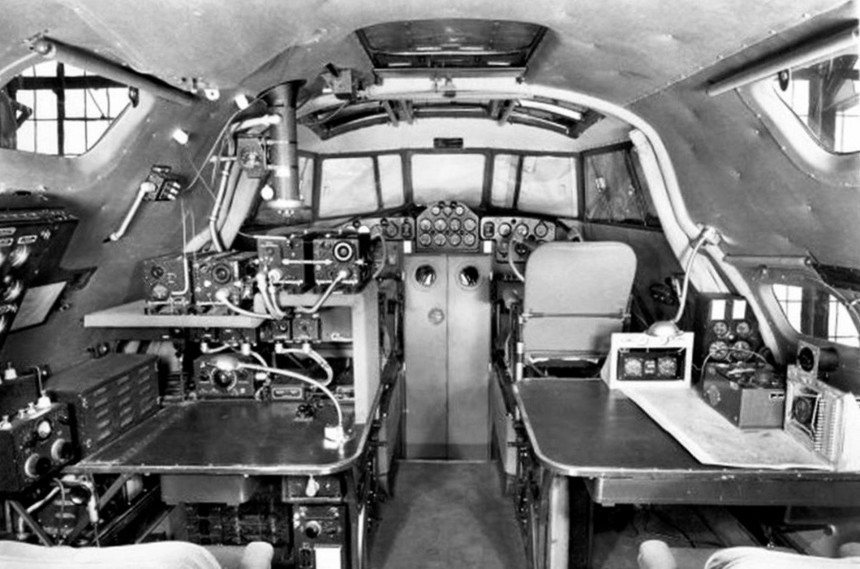We all know the story of the twin atomic bombings of Japan at the end of World War II. A bunch of brainiacs gather in the New Mexico desert and detonate a weapon unlike anything seen before; another group of brainiacs builds a plane to carry it, and then 75 years later, the film commemorating the whole shebang is beaten at the box office by the Barbie Movie. It's a story as well known as it is historically significant. But there are always new aspects to explore if you dig deep enough.
For example, did you know the Boeing B-29 Superfortress that carried the first two atomic payloads has a long-lost ancestor almost no one in modern aviation circles has heard of? We certainly didn't, and pity us for that reason. Because the Boeing XB-15 was nothing short of instrumental in the development of the B-29. Without one, the other might not have existed at all. Let's take a look at the details and see what's what.
Allow us to paint the scene for you. The year is 1933, the Great Depression is in full swing, and Adolf Hitler has just been appointed President of Germany. All the while, the world at large is still relatively unaware of what kinds of nefarious deeds he had planned. Meanwhile, Imperial Japan had already maintained control of Chinese Manchuria for two years. But, of course, this stretch of territory was nowhere near enough to satiate Japan's relentless hunt for recourses. At the same time, the U.S. Army Air Corps was beginning work on what they believed would be America's secret weapon in a hypothetical second Great War that would soon become a reality.
As we all know, this weapon was the quad-engine large strategic bomber. A concept that was attempted by nearly all major participants in the European and Pacific theaters of World War II but undoubtedly done best by the Americans. But before legends like the B-17 Flying Fortress, B-24 Liberator, and B-29 Superfortress could take to the skies, a lesser-known generation of predecessors was built to lay the foundation for future success. In its early stages, two American aerospace contractors were tasked with submitting design proposals tailor-made to the specifications of the Army Air Corps. These were the Glenn L Martin Company and Boeing.
Initially dubbed Project A by Boeing's pre-Skunkworks design team, what the Army Air Corps required was a large strategic bomber capable of carrying a payload in excess of 5,000 miles (8,000 km) at a constant cruising speed of 200 mph (320 kph). No big deal by modern standards. But in the early 1930s, that kind of performance was witchcraft. Under the leadership of Boeing's lead designer Jack Kylstra, the team initially planned to power their new bomber with four liquid-cooled Allison V-3420 W-24 engines jetting around 1,000 hp each. Instead, more conventional Pratt & Whitney R-1830 Twin Wasp engines similar to those found on the Consolidated B-24 Liberator and Grumman F4F Wildcat were used when the Allisons weren't ready in time.
Now given a new company name, the Model 299, Boeing worked tirelessly to integrate novel features that modern airplanes can't live without. Items like two gasoline-fueled generators, which worked as impromptu auxiliary power units (APUs), in-flight bathrooms, integrated wing de-icing equipment, and an impressive 110-volt electric system, were all pioneered on the Model 299. A very rudimentary autopilot system was also engineered specifically for Boeing's new bomber. Keep in mind, this was an entirely analog autopilot system using only basic gyroscopic heading and altitude indicators to orient the aircraft hands-free. Without the benefit of a silicone chip, the amount of mechanical know-how to make all of this work simply begs belief.
With dimensions of 87 feet and 7 inches (26.7 m) long and an impressive 149-foot (45.43-m) wingspan, there was plenty of space inside the Model 299's fuselage for creature comforts like sleeping cots, a rudimentary galley for in-flight provisions, and the above-mentioned porcelain throne. The vast wings were even large enough to accommodate crawl spaces that flight crews could use to conduct repairs. Under a new naming scheme cooked up by the Army Air Corps, the military's official name for the XB-15 and its cohorts became the Bomber, Long Range Project, BLR. With an obligatory "X" thrown in to designate an experimental airframe, the XB-15 took on a third name, the XBLR-1. Meanwhile, the Douglas Aircraft Corporation was assigned the name XBLR-2, which ultimately became the XB-19.
With three separate names under its belt before the thing had even made its first flight, the XB-15 was finally complete by September 1937 and was flying off to Wilbur Wright Field near Dayton, Ohio, for USAAC flight testing. But upon its arrival, Army Air Corps personnel found the new bomber to be more like a beached whale than a bomber. On its first trial flight laden with ordnance, the 70,706 lb (32,139 kg) fully-loaded beast could muster a top speed of just 145 mph (233 km/h). When completely empty except for fuel, this top speed was only boosted to 197 mph (317 kph).
So then, as a strategic bomber in a global war setting, the XB-15 would have been a sitting duck for Japanese Zeroes and German Bf-109s all day long. From this point forward, the XB-15's chances of being an operational bomber were all but over. But in terms of carrying cargo, Boeing's novel aircraft was among the best in the world. For instance, the XB-15 was able to lift a not-unsubstantial cargo load of 31,205 lbs (14,152.3 kg) to an altitude of 8,200 feet (2,500 m) on July 30, 1939. This was just one of the several weight-to-altitude records attributed to the XB-15 in the late 1930s.
Thus, the path forward was clear. The days of the XB-15 as a bomber were over. Interestingly enough, the few times that bombing run trials were conducted with the XB-15, the results were less than stellar. On one occasion, over 150 bombs were dropped over Panama to simulate a canal lock strike mission over several sorties. Of all these bombs, only three managed to hit their target. This works out to a roughly two percent success rate. Yeah, not that great, even by the standards of the era.
In its place, all of the aircraft's M1919 and M2 Browning defensive machine guns were removed in 1943, and its name changed once again to the XC-105 cargo transport plane. For the next 18 months, the XC-105 was given the loving nickname "Grandpappy" and carried thousands of Army Air Corps 20th Transport Squadron personnel to exotic places like the Caribbean, Panama, Chile, and the Galapagos.
Over half-a-million pounds of cargo and mail came and went through the Grandpappy's cargo bay during this time. But by this stage, the XC-105 was starting to present some worrying reliability problems. A couple of in-flight fires plus a full failure of its electrical system was enough for the Army Air Corps to order the plane scrapped in June 1945.
The bulk of the plane was dismantled and dumped in a swamp surrounding Panama's Albrook Field, where it slowly sank into the muck of the swamp in its final resting place where it remains today. Plans to modify the XB-15's blueprints into the larger Y1B-20 powered by Wright R-2600 Twin Cyclone radial engines were also scrapped.
By this stage, the two bombers birthed from lessons learned on the XB-15, the B-17 Flying Fortress, and the B-29 Superfortress had already played their part in winning the Second World War. With all this information in mind, it's clear that Enola Gay, Bockscar, and indeed the entire B-29 lineage might have never seen the light of day if not for the XB-15. For this reason, the world at large, in a roundabout way admittedly, owes the XB-15 our thanks.
Allow us to paint the scene for you. The year is 1933, the Great Depression is in full swing, and Adolf Hitler has just been appointed President of Germany. All the while, the world at large is still relatively unaware of what kinds of nefarious deeds he had planned. Meanwhile, Imperial Japan had already maintained control of Chinese Manchuria for two years. But, of course, this stretch of territory was nowhere near enough to satiate Japan's relentless hunt for recourses. At the same time, the U.S. Army Air Corps was beginning work on what they believed would be America's secret weapon in a hypothetical second Great War that would soon become a reality.
As we all know, this weapon was the quad-engine large strategic bomber. A concept that was attempted by nearly all major participants in the European and Pacific theaters of World War II but undoubtedly done best by the Americans. But before legends like the B-17 Flying Fortress, B-24 Liberator, and B-29 Superfortress could take to the skies, a lesser-known generation of predecessors was built to lay the foundation for future success. In its early stages, two American aerospace contractors were tasked with submitting design proposals tailor-made to the specifications of the Army Air Corps. These were the Glenn L Martin Company and Boeing.
Initially dubbed Project A by Boeing's pre-Skunkworks design team, what the Army Air Corps required was a large strategic bomber capable of carrying a payload in excess of 5,000 miles (8,000 km) at a constant cruising speed of 200 mph (320 kph). No big deal by modern standards. But in the early 1930s, that kind of performance was witchcraft. Under the leadership of Boeing's lead designer Jack Kylstra, the team initially planned to power their new bomber with four liquid-cooled Allison V-3420 W-24 engines jetting around 1,000 hp each. Instead, more conventional Pratt & Whitney R-1830 Twin Wasp engines similar to those found on the Consolidated B-24 Liberator and Grumman F4F Wildcat were used when the Allisons weren't ready in time.
With dimensions of 87 feet and 7 inches (26.7 m) long and an impressive 149-foot (45.43-m) wingspan, there was plenty of space inside the Model 299's fuselage for creature comforts like sleeping cots, a rudimentary galley for in-flight provisions, and the above-mentioned porcelain throne. The vast wings were even large enough to accommodate crawl spaces that flight crews could use to conduct repairs. Under a new naming scheme cooked up by the Army Air Corps, the military's official name for the XB-15 and its cohorts became the Bomber, Long Range Project, BLR. With an obligatory "X" thrown in to designate an experimental airframe, the XB-15 took on a third name, the XBLR-1. Meanwhile, the Douglas Aircraft Corporation was assigned the name XBLR-2, which ultimately became the XB-19.
With three separate names under its belt before the thing had even made its first flight, the XB-15 was finally complete by September 1937 and was flying off to Wilbur Wright Field near Dayton, Ohio, for USAAC flight testing. But upon its arrival, Army Air Corps personnel found the new bomber to be more like a beached whale than a bomber. On its first trial flight laden with ordnance, the 70,706 lb (32,139 kg) fully-loaded beast could muster a top speed of just 145 mph (233 km/h). When completely empty except for fuel, this top speed was only boosted to 197 mph (317 kph).
So then, as a strategic bomber in a global war setting, the XB-15 would have been a sitting duck for Japanese Zeroes and German Bf-109s all day long. From this point forward, the XB-15's chances of being an operational bomber were all but over. But in terms of carrying cargo, Boeing's novel aircraft was among the best in the world. For instance, the XB-15 was able to lift a not-unsubstantial cargo load of 31,205 lbs (14,152.3 kg) to an altitude of 8,200 feet (2,500 m) on July 30, 1939. This was just one of the several weight-to-altitude records attributed to the XB-15 in the late 1930s.
In its place, all of the aircraft's M1919 and M2 Browning defensive machine guns were removed in 1943, and its name changed once again to the XC-105 cargo transport plane. For the next 18 months, the XC-105 was given the loving nickname "Grandpappy" and carried thousands of Army Air Corps 20th Transport Squadron personnel to exotic places like the Caribbean, Panama, Chile, and the Galapagos.
Over half-a-million pounds of cargo and mail came and went through the Grandpappy's cargo bay during this time. But by this stage, the XC-105 was starting to present some worrying reliability problems. A couple of in-flight fires plus a full failure of its electrical system was enough for the Army Air Corps to order the plane scrapped in June 1945.
The bulk of the plane was dismantled and dumped in a swamp surrounding Panama's Albrook Field, where it slowly sank into the muck of the swamp in its final resting place where it remains today. Plans to modify the XB-15's blueprints into the larger Y1B-20 powered by Wright R-2600 Twin Cyclone radial engines were also scrapped.
